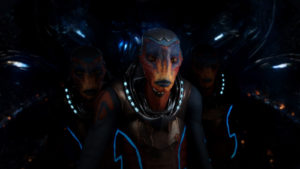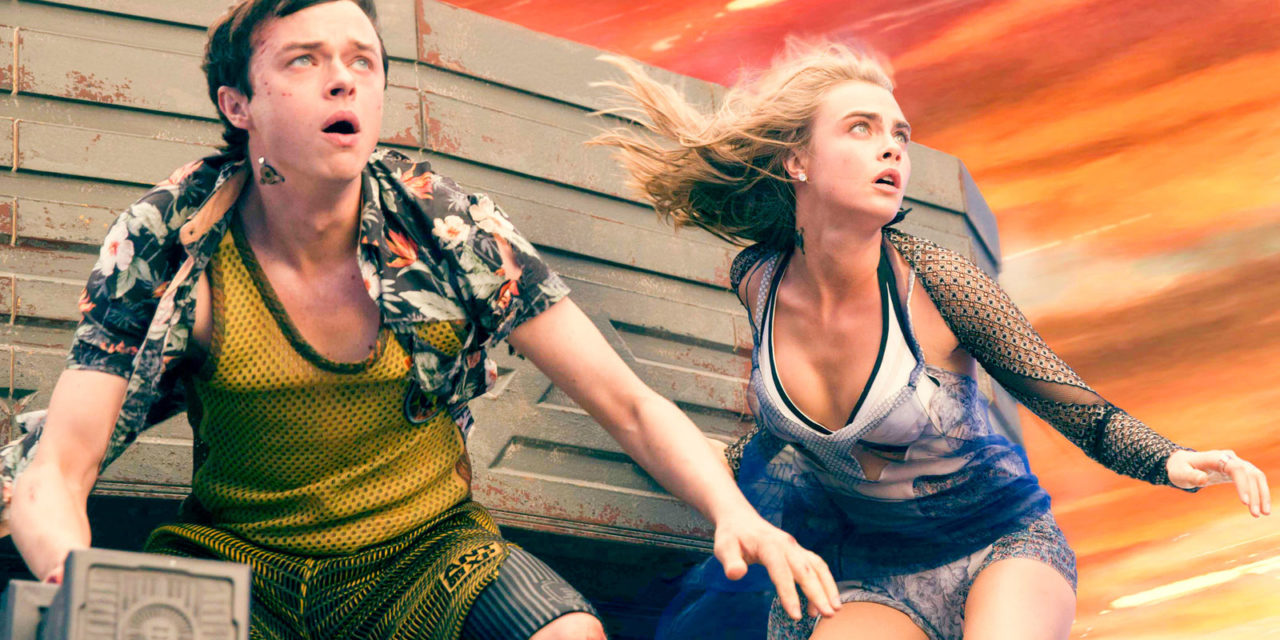By Gavin Arucan | Staff Writer
“Valerian and the City of a Thousand Planets” is another space-based visual spectacle from Luc Besson, who is also known for “The Fifth Element.” The film is adapted from the highly influential sci-fi comic series, “Valérian and Laureline.”
The French comic, which premiered in 1967, predates even the likes of “Star Wars” and played a significant part in shaping the science fiction genre into what it is today. Despite this, I, and many other Americans, had not heard of the comic series until the movie was well through its promotional campaign, so I have no idea how the movie measures up to the comic books.
From what little I’ve seen of the comic, I am surprised that such a unique creation had not been given a cinematic venture until now. Granted, it would take a true visionary to preserve the colorful images during their transition from page to screen, so Besson was the perfect choice of director, especially since he had already worked with the “Valérian and Laureline” creator in the past.
The visuals of the “Valerian” film are the real stars of the film. Every frame bursts with intrigue and creativity. “Valerian” is set on Alpha, the city of a thousand planets, which acts as a metropolis for nearly every species in the “Valerian” universe. This location allows the audience to view hundreds of unique locations and characters as the movie progresses, each one drastically different than the last.
Unlike most of the alien species in popular sci-fi films such as “Star Trek” or “Guardians of the Galaxy,” no alien looks at all like a human. Despite all the aliens being CGI creations, this makes the universe of “Valerian” seem more believable. With such a vast universe, why would most aliens look like a human in makeup?

The colorful Kortan Dahuk species is shown to be the first aliens to meet humans during an intriguing opening sequence accompanied by David Bowie’s “Space Oddity.” (Photo courtesy of STX Entertainment)
Besson was able to construct the universe by hiring artists around the world to design alien species separately. Since no two artists had any contact with each other, all the final designs came back looking truly alien.
Though I am passionate about practical effects, I’m fine with “Valerian” relying so much on CGI because the effects are used to full creative potential. I’ll be surprised if “Valerian” isn’t nominated for an Academy Award for Visual Effects. None of the CGI aliens look realistic, but that only adds to the style of the film. Even though “Valerian” is supposed to be a space opera, it visually looks like a cartoon or a comic book.
The technology in the film is also very fun to learn about. The first action sequence happens as the characters are phasing back and forth through another dimension. The whole idea is similar to how virtual reality works, but you’re able to actually enter the other world using certain devices.
“Valerian” is visual masterpiece and an achievement in world-building, but that can also create some problems. The main focus of the film is on world-building, and while fascinating, it takes away from characters and story.
Major Valerian (Dane DeHaan) and Sergeant Laureline (Cara Delevingne) are characters that are fun to watch as snarky action heroes, but that’s pretty much it. They’re given a will-they-won’t-they romance that either needed to be better developed or cut out all together. Both DeHaan and Delevingne don’t seem to be good enough actors to really sell the dramatic and romantic scenes. Their chemistry as a pair of intergalactic government agents was entertaining, but they were just along for the ride as the visuals carried the film.
The story is essentially a buddy cop film with a mystery element to solve. Like most movies of this type, the mystery is mostly used as a plot thread to loosely tie the world-building around.
Throughout the film, I wasn’t worried about the story or seeing the characters form a romantic relationship, I was there to watch a spectacle. The weak romance and plot may be a deterrent to some, but for what “Valerian” wanted to be, that was all it needed. “Valerian” is an excuse for the director and his crew to play around in such a fascinating sci-fi universe, and I can respect that. Very seldom is a filmmaker allowed to do whatever he or she wants, but “Valerian” is obviously an exception. While watching “Valerian,” I saw a filmmaker letting his imagination run wild. Even though the script may have been left in the dust as a result, I can’t help but smile along with Besson’s infectious passion for creativity.






